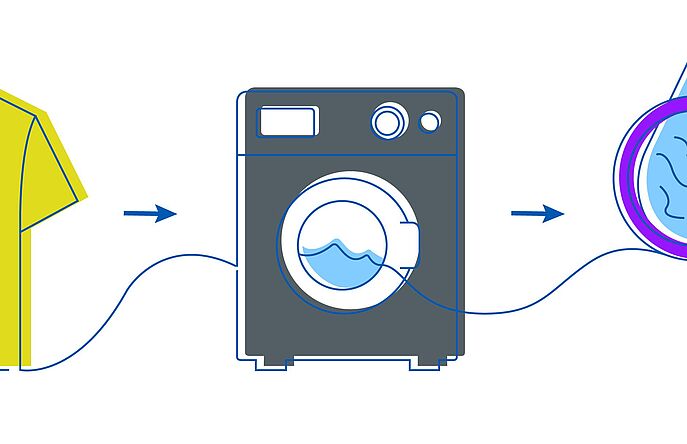BÖNNIGHEIM, GERMANY (Jan. 23, 2020) – Hohenstein has completed the development of its new method for analyzing microfiber shedding from textiles. Using dynamic image analysis, the method quantifies shedding behavior and reveals previously unattainable data with practical implications for material development throughout the supply chain.
The new method is the result of four years of research at Hohenstein, published in an article by lead researcher Jasmin Haap. The research team developed, refined and validated an analytical method that goes beyond current approaches of measuring the shedded mass to quantify fiber count, length, diameter and shape. Further analysis can reveal the distribution of these attributes and even generate separate results for cellulosic fibers (e.g. cotton) and non-cellulosic fibers (e.g. polyester). This analysis is currently available exclusively through Hohenstein.
With this level of detail, researchers can now quantify in more detail which types of fiber and material constructions contribute most to microfiber release, leading to informed decisions in development of more sustainable textiles that shed less.
Synthetic microfibers are tiny pieces of plastic released into water during mechanical stress, particularly washing. Wastewater containing microfibers eventually flows through sewage into larger bodies of water. Along the way, synthetic microfibers attract harmful substances and pollutants from the environment, harming sea life and entering the food chains of larger fish and humans.
Dynamic image analysis of wastewater is non-destructive, allowing additional tests, such as filtration, to be performed for further analysis. Filtration, the most common method to date, involves filtering the wastewater from textile laundering, then weighing the remaining particles.
In November 2019, Hohenstein joined the Microfibre Consortium as a contributing research member.
You can find more information about Hohenstein and the company’s microfiber testing services at Hohenstein.US/Microfibers
###
With more than 40 offices and laboratories worldwide, Hohenstein is an international testing partner in the textile industry. Hohenstein’s research centers around the interaction between textiles, humans and the environment. It is a founding member and leading provider of the OEKO-TEX® portfolio of services such as the STANDARD 100 by OEKO-TEX® certification, the international standard for safe textiles, and is certified by the U.S. Consumer Products Safety Commission as a third-party, independent laboratory for CPSIA compliance verification. Hohenstein.US

